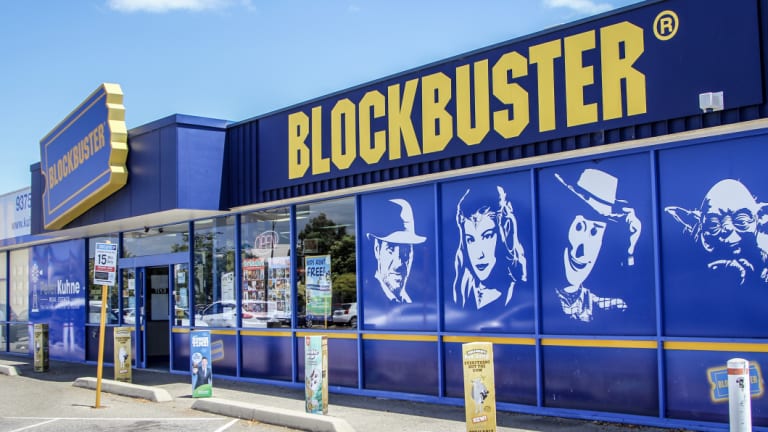Why Some Companies Fail: Companies that failed due to competition
In the dynamic world of business, competition can be both a driving force and a formidable challenge. While healthy competition fosters innovation and drives companies to improve, it can also lead to the downfall of those who fail to adapt or differentiate themselves effectively. In this article, we’ll explore several notable cases of companies that failed due to competition, extracting valuable lessons that can help businesses navigate similar challenges today.
Blockbuster vs. Netflix: The Rise of Digital Disruption – Companies that failed due to competition
Blockbuster’s Dominance and Downfall
Once synonymous with movie rentals, Blockbuster was a household name in the 1990s and early 2000s. With thousands of stores worldwide, Blockbuster dominated the market for physical movie rentals. However, the company faced a critical decision when Netflix, a fledgling DVD-by-mail service, emerged as a competitor.
Failure to Adapt to Changing Trends
Blockbuster initially dismissed Netflix as a niche player. Instead of embracing the shift to online streaming and subscription-based models, Blockbuster clung to its brick-and-mortar rental model. By the time Blockbuster attempted to compete with its own online platform, it was too late. Netflix had already established a strong foothold and adapted to consumer preferences for convenience and affordability.
Lesson Learned: Embrace Innovation and Consumer Trends
Blockbuster’s downfall serves as a stark reminder of the importance of adapting to technological advancements and changing consumer behavior. Businesses must continually innovate and evolve their offerings to stay relevant in a competitive landscape.
Nokia: Companies that failed due to competition
Nokia’s Market Leadership
In the early 2000s, Nokia was a global leader in the mobile phone industry. The Finnish company dominated the market with its robust lineup of mobile devices, renowned for their durability, user-friendly interfaces, and extensive battery life. Nokia’s brand loyalty was unparalleled, with millions of consumers worldwide choosing Nokia phones over competitors like Motorola and Ericsson.
Missed Opportunities in Smartphone Revolution
However, Nokia’s downfall began when it failed to anticipate and respond effectively to the smartphone revolution sparked by Apple’s iPhone and Google’s Android platform. Nokia remained focused on its feature phone strategy while competitors swiftly embraced touchscreen technology, app ecosystems, and internet connectivity.
Lesson Learned: Anticipate and Adapt to Disruptive Technologies
Nokia’s decline underscores the importance of staying ahead of technological disruptions. Businesses must continuously scan the horizon for emerging trends and be willing to pivot their strategies to capitalize on new opportunities.
Kodak: Companies that failed due to competition
Kodak’s Legacy in Photography
Kodak was synonymous with photography for over a century. The company pioneered the consumer photography market with its easy-to-use cameras and affordable film rolls, capturing significant market share globally. Kodak’s name became synonymous with capturing memories, with “Kodak moment” entering the lexicon as a phrase to describe memorable occasions.
Failure to Embrace Digital Photography
Despite its early innovations in digital photography technology, Kodak struggled to transition from its lucrative film-based business model. The company hesitated to fully embrace digital photography, fearing it would cannibalize its profitable film sales. This hesitation allowed competitors like Canon, Nikon, and later smartphone manufacturers to dominate the rapidly growing digital photography market.
Lesson Learned: Embrace Digital Transformation
Kodak’s story serves as a cautionary tale about the risks of complacency and the importance of embracing digital transformation. Businesses must be proactive in adopting new technologies that align with shifting consumer preferences and industry trends.
Nanomites: Tiny Machines, Big Impact | Maya (mayathevoice.com)
Toys “R” Us: Companies that failed due to competition
Toys “R” Us: A Toy Retail Giant
For decades, Toys “R” Us reigned as the largest toy retailer in the United States and a beloved destination for children and parents alike. With its expansive stores filled with a wide array of toys and games, Toys “R” Us was a staple of the retail landscape, especially during the holiday season.
Impact of E-commerce and Changing Consumer Behavior
Toys “R” Us struggled to adapt to the rise of e-commerce giants like Amazon, Walmart, and Target, which offered competitive pricing, convenience, and a broader selection of products. The shift in consumer behavior towards online shopping further eroded Toys “R” Us’s market share, as it struggled to compete with the digital-first strategies of its rivals.
Lesson Learned: Embrace Omnichannel Retail Strategies
Toys “R” Us’s downfall underscores the importance of adopting omnichannel retail strategies that integrate both physical stores and online platforms. Businesses must provide seamless shopping experiences across multiple channels to meet evolving consumer expectations.
The story of the First Computer Processor | Maya (mayathevoice.com)
Conclusion: Navigating Competitive Challenges
The stories of Blockbuster, Nokia, Kodak, and Toys “R” Us highlight critical lessons for businesses navigating competitive landscapes:
- Adaptability: Embrace innovation and adapt to technological advancements to stay relevant.
- Anticipation: Anticipate industry shifts and consumer trends to proactively adjust business strategies.
- Digital Transformation: Embrace digital transformation to capitalize on new opportunities and avoid becoming obsolete.
- Omnichannel Strategy: Adopt omnichannel retail strategies to provide seamless customer experiences across physical and digital platforms.
By learning from these examples, businesses can better position themselves to thrive in competitive environments and sustain long-term success. Remember, in the face of competition, proactive adaptation and strategic innovation are key to staying ahead of the curve. What are your thoughts on whether these tech giants can stay afloat amidst intensifying competition? Comment below and subscribe to Maya for more insightful discussions!




